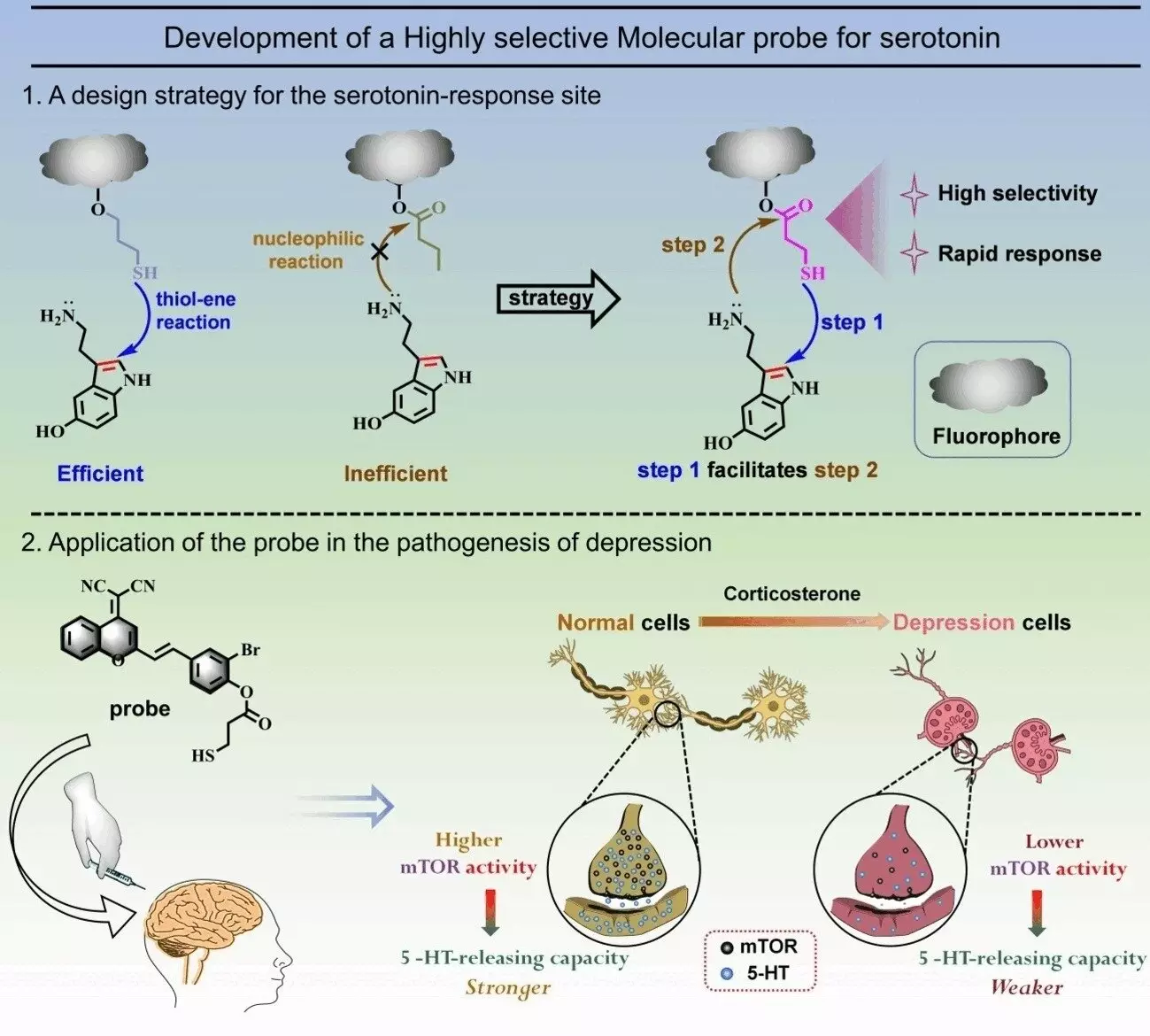The debate surrounding the correlation between serotonin and depression is crucial for advancing our understanding of this complex mental health disorder. A recent study conducted by a team of researchers from China has introduced a novel fluorescent probe that can provide valuable insights into the role of serotonin in the pathophysiology of depression. By unveiling the intricate mechanisms underlying serotonin signaling, this research paves the way for innovative diagnostic methods, more effective treatment strategies, and the development of targeted therapeutic interventions.
In their study published in Angewandte Chemie International Edition, the Chinese research team describes the creation of a highly sensitive and selective molecular fluorescent probe designed to visualize serotonin-related processes. Led by Weiying Lin at Guangxi University, the team aimed to overcome the challenges posed by the structural and chemical similarities of serotonin to other biomolecules like melatonin and tryptophan. By incorporating a unique reactive group (3-mercaptopropionate) that interacts specifically with serotonin through a cascade reaction, the researchers were able to differentiate serotonin from other compounds. This innovative approach enabled the probe to selectively detect serotonin even within cellular environments, providing a new tool for studying serotonin dynamics in depression.
Depression is a global public health concern with limited treatment options, partly due to the complex nature of its underlying mechanisms. While traditional theories suggested that decreased serotonin levels are the primary cause of depression, recent studies have challenged this notion. By utilizing the fluorescent probe to examine serotonin levels in neuronal cell lines exposed to corticosterone-induced depression, the researchers made a surprising discovery. Contrary to expectations, the serotonin levels in both normal and “depressed” cells were comparable, indicating that serotonin concentration alone may not be the defining factor in depression. Instead, the team found that the ability of neurons to release serotonin in response to stimuli was significantly impaired in depressive cells. This impaired serotonin release was linked to the activity of mTOR, a key molecule in cellular signaling pathways.
The findings of this study suggest a paradigm shift in the understanding of depression and its treatment strategies. While conventional antidepressants focus on increasing serotonin levels through reuptake inhibition, this research highlights the importance of enhancing neuronal serotonin release. By targeting mTOR activation, it may be possible to restore the normal serotonin release capacity of neurons in individuals with depression. The observed correlation between mTOR activity and serotonin release opens up new avenues for developing more targeted and effective interventions for depression.
The development of a selective fluorescent probe for visualizing serotonin dynamics has provided valuable insights into the pathophysiology of depression. By uncovering the role of serotonin release in depressive states and its correlation with mTOR activity, this study sheds new light on potential treatment approaches for depression. Further research in this area holds promise for advancing our understanding of depression and improving patient outcomes.



Leave a Reply